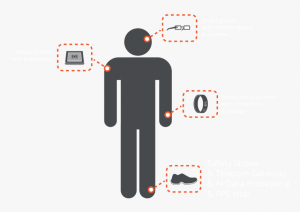Wearable medical device technology is turning the corner into becoming the go-to modern solution for remote monitoring healthcare needs. In what industry leaders say is now the third generation of wearables, the market has experienced a flood of new products that cover a variety of specific critical healthcare considerations. Smartwatches and their ilk were merely the tip of the iceberg.
In 2020, Nanosensor technology developer Nanowear conducted a test run for its SimpleSENSE adjustable undergarment in New York City health clinics. Evaluated for its capacity as a general diagnostic tool, the SimpleSENSE one-size-fits-all wearable can measure real-time body temperature, blood pressure, lung volume and fluid, and blood flow hemodynamics in addition to producing electrocardiogram readings.
The Computer Science and Artificial Intelligence Lab (CSAIL) at the Massachusetts Institute of Technology has developed a bevy of smart-clothing prototypes configured to track movement. In this product line, garments such as gloves, socks, and vests are embedded with unobtrusive wearable technology. CSAIL has joined with the Toyota Research Institute to analyze these sensor-embedded textiles and their ability to assess movement metrics across various factors based on where exactly they are worn.
Wearables have also been introduced into the world of athletics; the technology has been particularly beneficial for the recovery processes and preventative care needs of student-athletes. The Modesto Junior College sports medicine program is in the midst of a trial run of the sensor-equipped Cipher Skin BioSleeve for its baseball players and plans to roll out the program to its other athletic divisions if proven successful.























